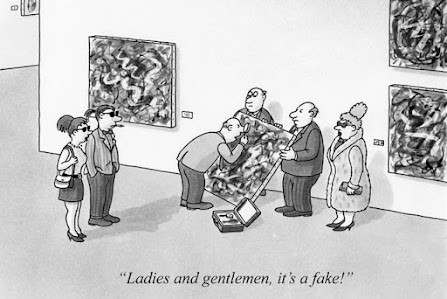Take any Baroque composer--Bach, Buxtehude, Pachelbel, Vivaldi, doesn’t really matter--and then ask someone today who knows musical composition if they can construct an original piece in their Baroque style that’s about 10 minutes long. They have free choice in terms of instruments and whether it’s a concerto, cantata, et cetera.
Okay, so your musical acquaintance goes off to work and knocks out a beautiful and original work in the Baroque style. My question: is it Art?
This is the problem also in the visual arts. You are sight-seeing in a city and come across a neighborhood with art galleries, and there in a window of one of them is a Cezanne-like painting. I mean, it’s super-Cezanne, the artist enhanced colors and lines a bit to sharpen that style. You might even say “wow!”
Then you think to yourself that this is someone who paints like Cezanne and does it very well. But…is it Art?
So presents the problem of style in the Arts. I notice a distinctive style among many artists though most of them certainly belong to a particular era; i.e., Rembrandt was as much a part of his time as was Thomas de Keyser, although most of us like Rembrandt more. While they each had a distinct style, it was a style of the time.
And that’s just it, while Rembrandt may have imitated some of de Keyser’s style, he made it uniquely his own. Nonetheless, today we recognize both artists within a particular time and place.
That brings us to the former issue. You may be able to construct an original artwork in the style of an era that has passed, but is it really Art? Everything to which the artists of that time responded has now passed, the technical innovations of their day are no longer the case. That does not mean that the imitative work you made is “bad,” but I don’t think it is a work that dialogues with its generation.
A painter today may paint like Jackson Pollock, or a sculptor may create a piece alike to Louise Nevelson, but they are extending a style more than they are creating a personal impression. Granted, it will be their interpretation of Pollock or Nevelson, but it would be tough to separate the style from the original artists.
Thus, artwork of the past does impact us today, it even inspires some to imitate those styles. Nonetheless, we realize that they were part of their generation, and while there are time-less elements that impress us currently, those were birthed in the past.
